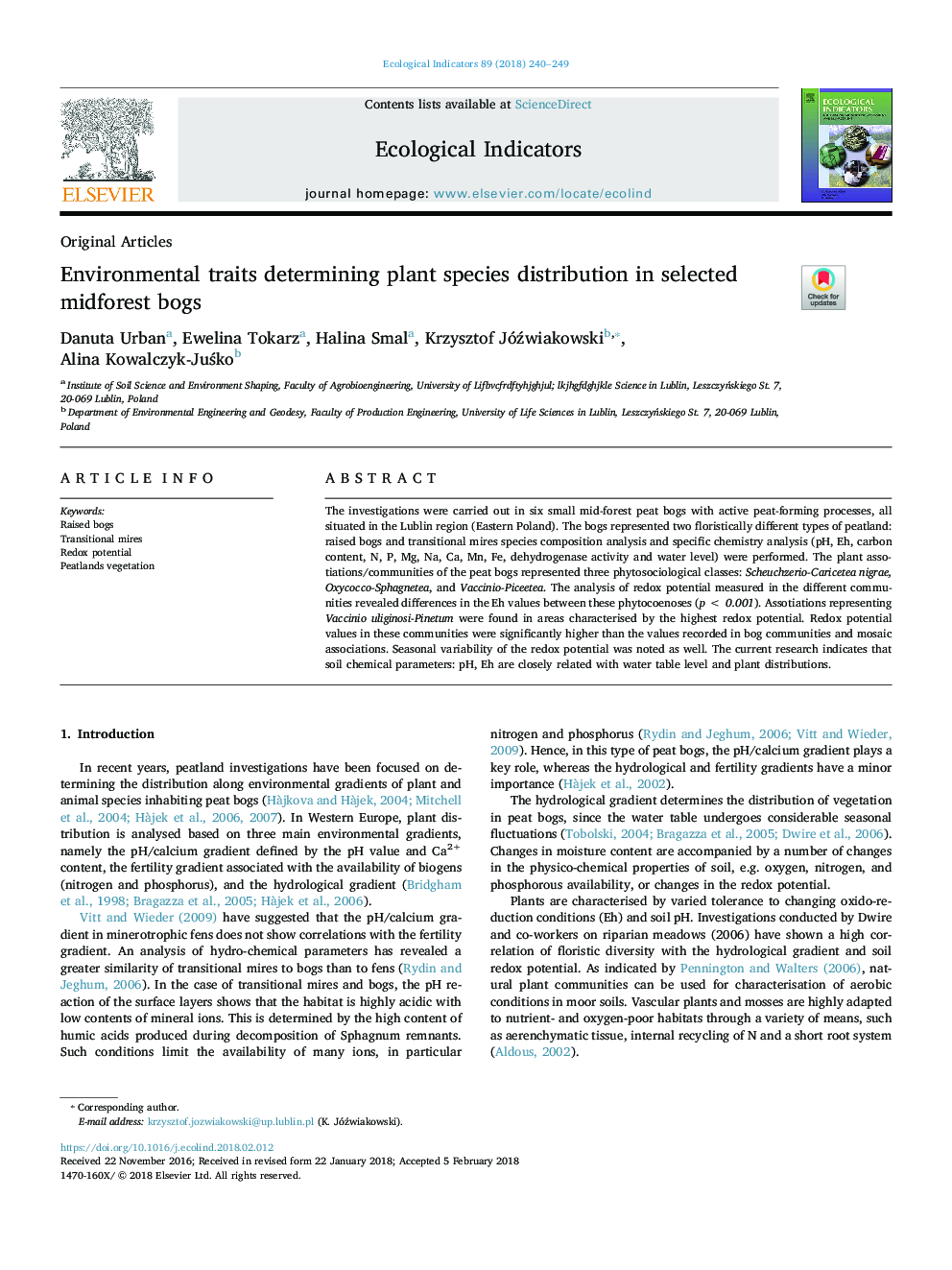| Article ID | Journal | Published Year | Pages | File Type |
|---|---|---|---|---|
| 8845458 | Ecological Indicators | 2018 | 10 Pages |
Abstract
The investigations were carried out in six small mid-forest peat bogs with active peat-forming processes, all situated in the Lublin region (Eastern Poland). The bogs represented two floristically different types of peatland: raised bogs and transitional mires species composition analysis and specific chemistry analysis (pH, Eh, carbon content, N, P, Mg, Na, Ca, Mn, Fe, dehydrogenase activity and water level) were performed. The plant assotiations/communities of the peat bogs represented three phytosociological classes: Scheuchzerio-Caricetea nigrae, Oxycocco-Sphagnetea, and Vaccinio-Piceetea. The analysis of redox potential measured in the different communities revealed differences in the Eh values between these phytocoenoses (pâ¯<â¯0.001). Assotiations representing Vaccinio uliginosi-Pinetum were found in areas characterised by the highest redox potential. Redox potential values in these communities were significantly higher than the values recorded in bog communities and mosaic associations. Seasonal variability of the redox potential was noted as well. The current research indicates that soil chemical parameters: pH, Eh are closely related with water table level and plant distributions.
Keywords
Related Topics
Life Sciences
Agricultural and Biological Sciences
Ecology, Evolution, Behavior and Systematics
Authors
Danuta Urban, Ewelina Tokarz, Halina Smal, Krzysztof Jóźwiakowski, Alina Kowalczyk-JuÅko,
